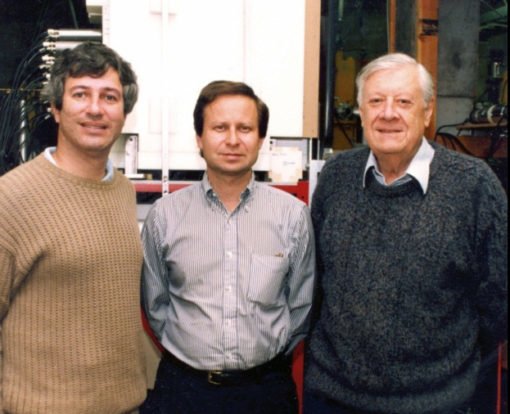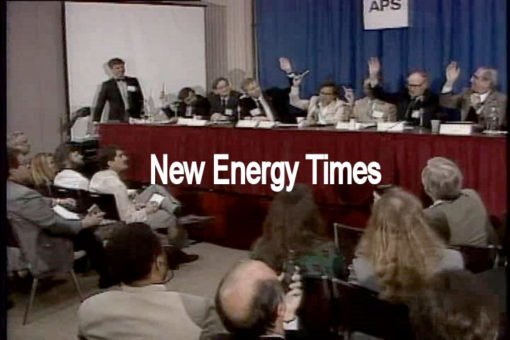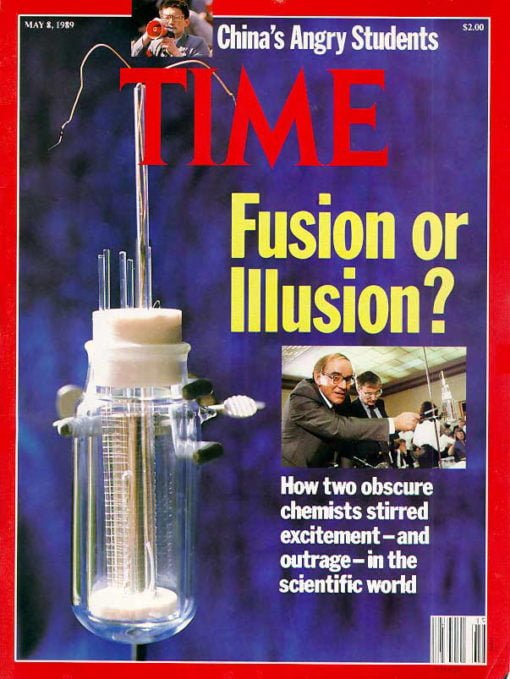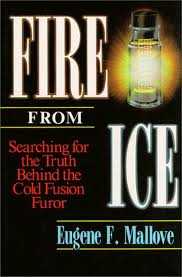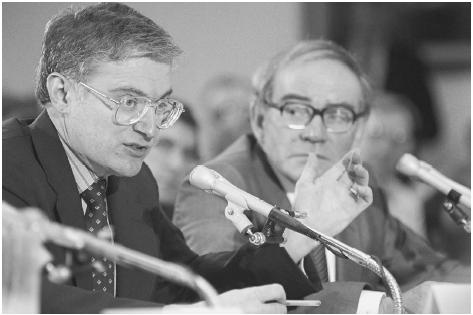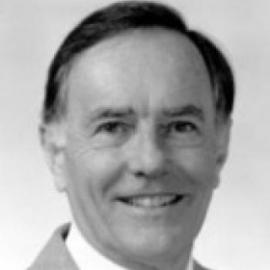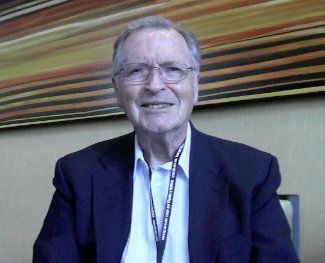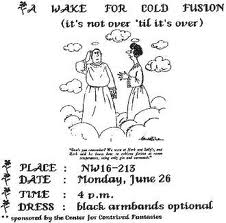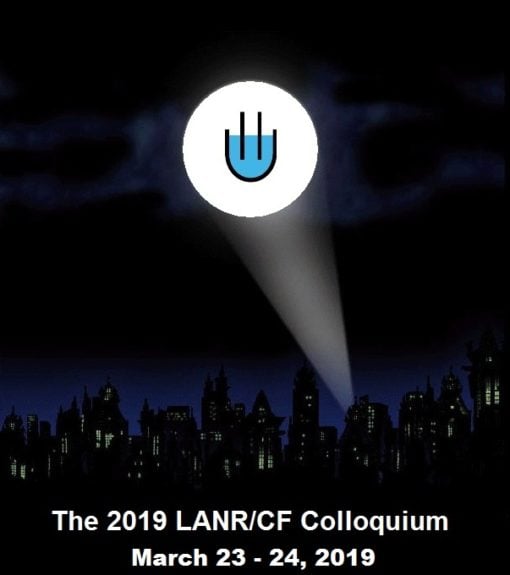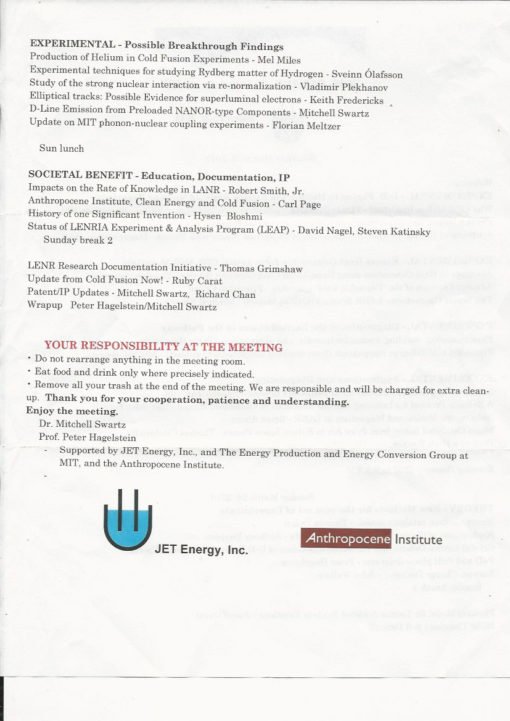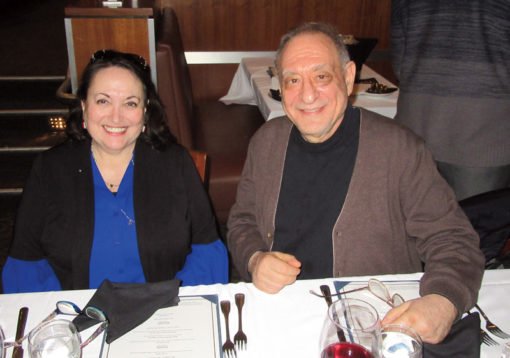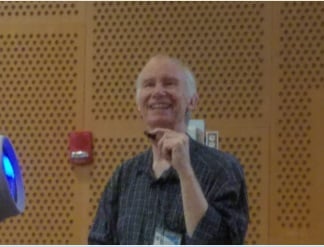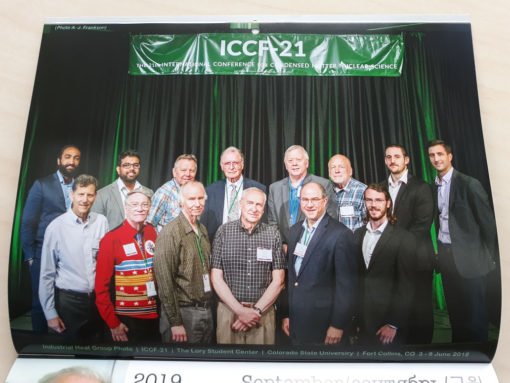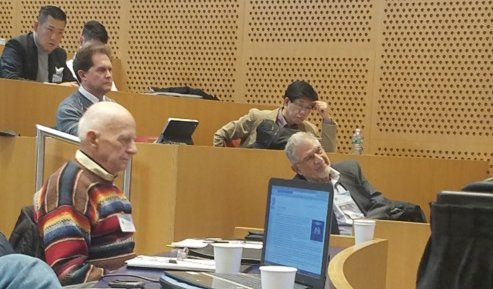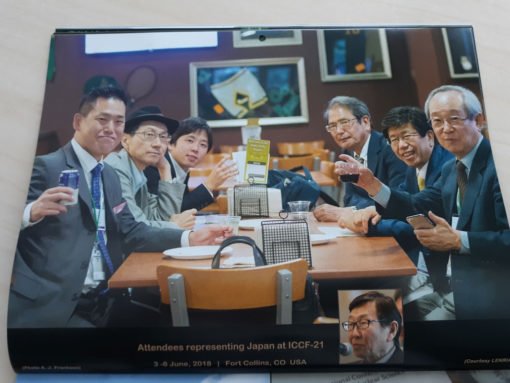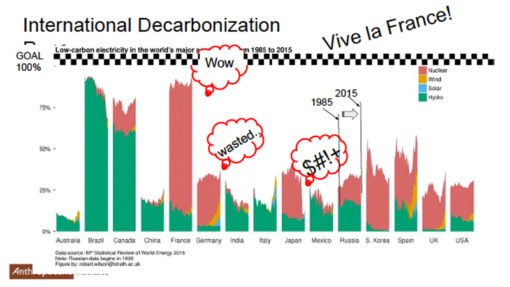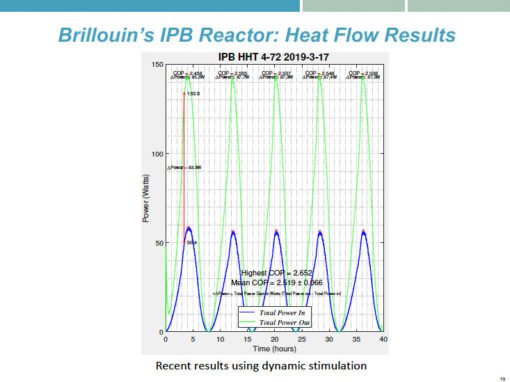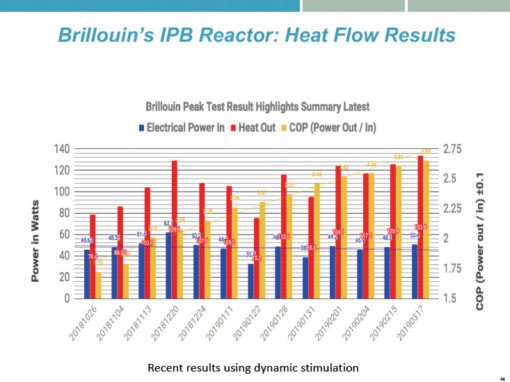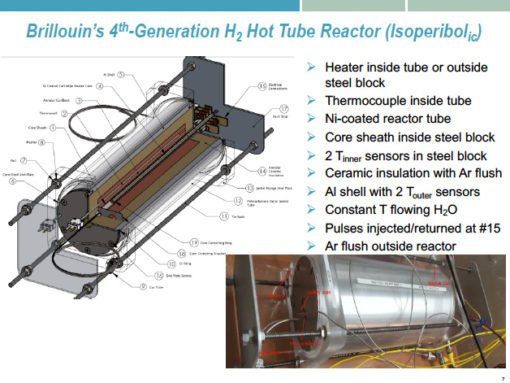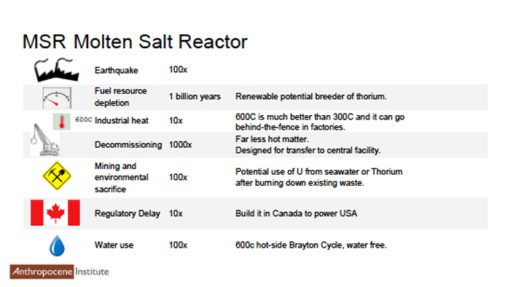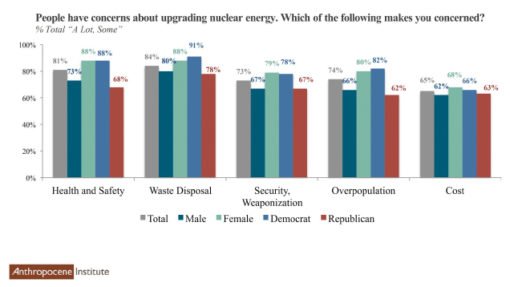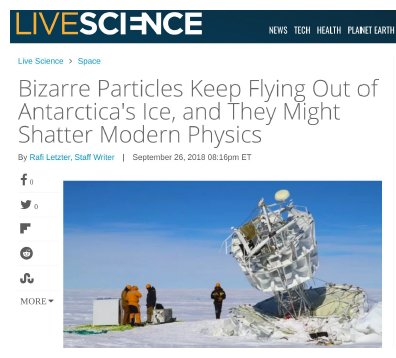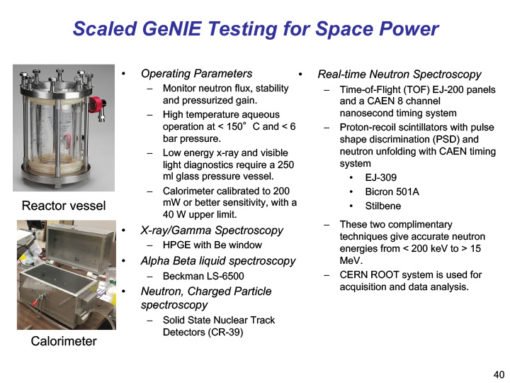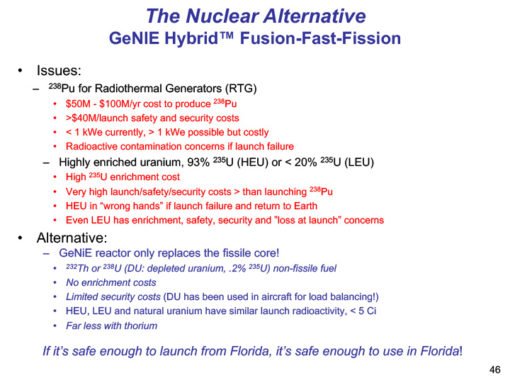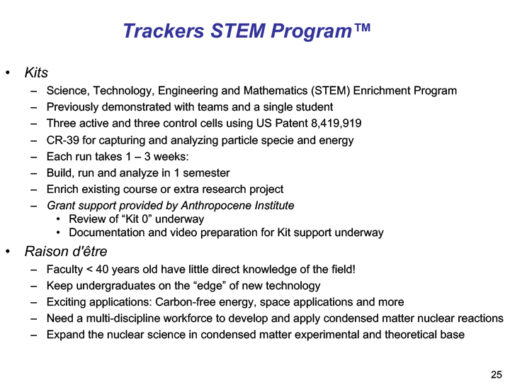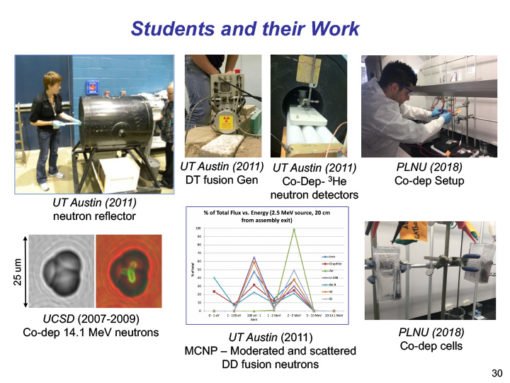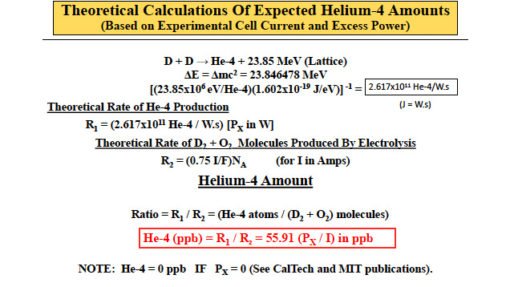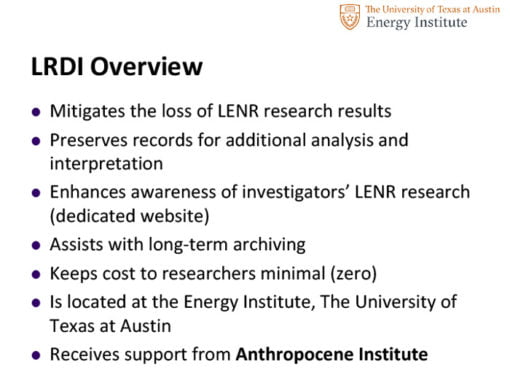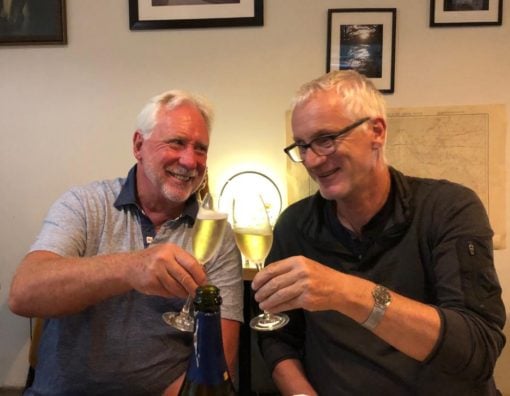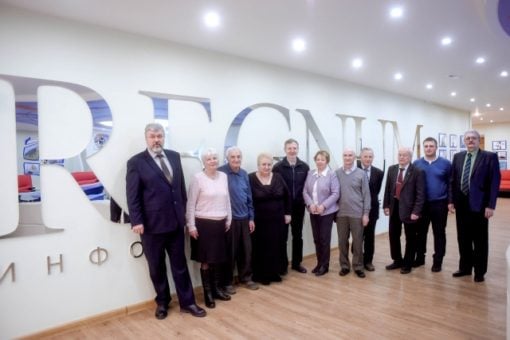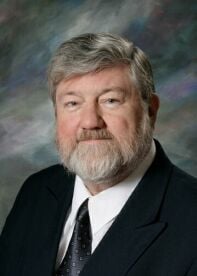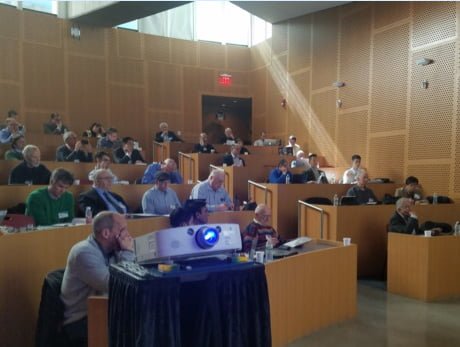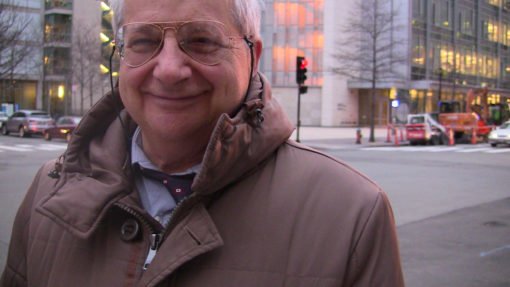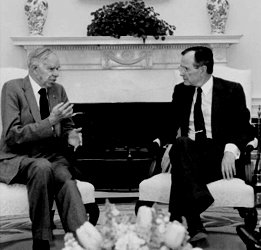This is a re-post of a modified google-translated article by Sergey Tsvetkov published April 8, 2019 at REGNUM https://regnum.ru/news/2606951.html. Any use of materials is allowed only if there is a hyperlink to REGNUM news agency.
The prototype of the Soviet prospective cold fusion reactor on deuterated titanium was created in May 1989 by the head of the institute of the USSR Minsredmash NIKIET N. A. Dollezhal. The collapse of the USSR delayed the revolution in global nuclear energy by almost 30 years.
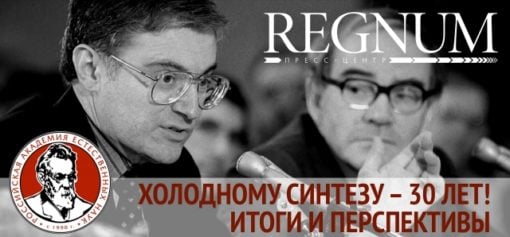
A report by Sergey Alekseevich Tsvetkov, a member of the Coordination Council of the Russian Academy of Natural Sciences on the issue of Cold Transmutation, “My opinion on cold nuclear fusion” at the 30-year-old Cold Synthesis Conference: Results and Prospects held on March 23, 2019 in Moscow.
* * *
Comment REGNUM
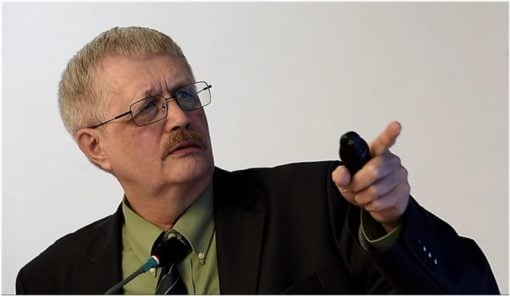
Sergey Tsvetkov is a nuclear physicist, a specialist in nuclear reactor physics, the author of a promising project for a cold fusion reactor on deuterated titanium, the development of which began in the Sverdlovsk branch of the Research and Design Institute of Power Engineering (SF NIKIET) of the USSR Ministry of Medium Machine Building.
* * *
“If there was no cold fusion, it should have been invented. ”
My report is devoted to the results that I received in the field of cold fusion in 30 years of work, practically from the very moment when Martin Fleischmann and Stanley Pons announced their discovery on March 23, 1989.
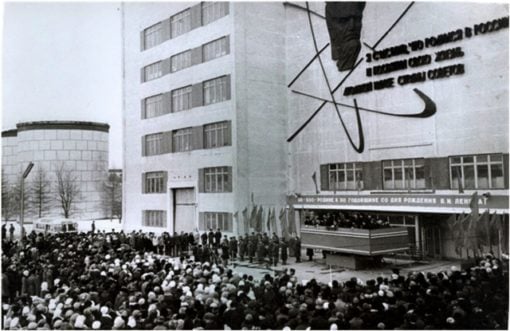
Fig. 1. Solemn rally in Zarechny, Sverdlovsk region on the launch at the Beloyarsk NPP them. IV Kurchatov BN-600 fast neutron reactor in April 1980
How it all began. Here, in the city of Zarechny, it all started when the newspaper “Izvestia” on March 25, 1989 published the article “The Discovery of the Century or …” by a famous international journalist, correspondent for the United States and Great Britain, Alexander Shalnev, in which he spoke about a sensational press. conference at the University of Utah in Salt Lake City, USA.
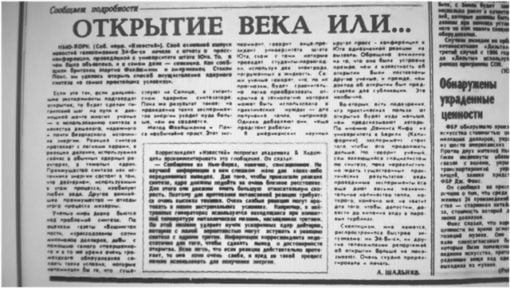
Fig. 2. A clipping from the Izvestia newspaper dated March 25, 1989 with Alexander Shalnov’s article “The Discovery of the Century or …”
“THE DISCOVERY OF THE CENTURY OR …”
NEW YORK. (Sob. Correspondent. “News”). ABC began its major news release with a report on a press conference held at the University of Utah. What was announced, and in fact – a sensation. According to Briton Martin Fleischmann and American Stanley Pons, they managed to discover a way to carry out nuclear fusion under the simplest conditions.
If this is so, if further experiments confirm the discovery, then a giant step will be made to the long-standing dream of many scientists – to use fusion as a cheap, reliable and almost safe source of energy. The fusion reaction proceeds with light nuclei, and the fission reaction, which is now used in conventional nuclear reactors, is in heavy nuclei. The advantage of fusion as an energy source is that any water abounds in the deuterium used in this process. Another major advantage – the waste of this process is scanty.
The scientists of the world have long been fighting the problem of fusion. According to the Washington Post newspaper, hundreds of millions of dollars have been spent, so that using the most sophisticated and at the same time very cumbersome equipment to create conditions that would resemble those that exist on the Sun in a giant nuclear synthesizer. In the meantime, the result is the following: to carry out such experiments, the energy is spent much more than it is created.
The method of Fleischmann and Pons is extraordinarily simple. This experiment, said the vice-president of the University of Utah, is similar to those conducted by first-year students using two electrodes immersed in a liquid. Scientists themselves say that, according to their forecasts, it will be relatively easy to transform the discovery into a technology that can be used in practical needs – for heat, for example. However, they add, “there is still work to do.”
In American scientific circles, the press conference in Utah did not cause a definite reaction. Attention was drawn to the fact that it was arranged before other scientists were notified of the discovery, and before the discovery report was submitted for publication. It’s unusual.
Secondly, there is a suspicion that the practical benefits of the discovery will be much less than the authors predict. According to Dennis Keef from the University of Berkeley (California), the experiment is worth it to continue on. But, says the scientist, himself a specialist in fusion, it is unrealistic to wait for substantial practical results: after all, the experiments that are conducted still produce a very small amount of heat, which, of course, is not enough to bring boiling water to steam. .
Skepticism, it seems to me, has spread faster than enthusiasm: neither ABC nor other TV companies report on the discovery anymore. Very poorly reacted and print.
A. Shalnev.
Further, a comment was published by Academician of the USSR Academy of Sciences Boris Borisovich Kadomtsev, a well-known specialist in plasma physics and controlled thermonuclear fusion.
The correspondent of Izvestia asked academician B. Kadomtsev to comment on this message. He said:
“The message from New York is, of course, sensational. But the scientific information in it is too small for any definite conclusions. In order for the fusion reactions to occur, the nuclei must come to a very close distance. To do this, they must have a greater relative speed. Therefore, a very high technique is required for an intensive reaction. Very weak reactions can occur under less extreme conditions. For example, neutron generators use a metal target saturated with tritium located at room temperature. This beam strikes a beam of accelerated deuterium nuclei, which with low probability can react with tritium nuclei. The information of the correspondent is not enough to make a conclusion about the reliability of the discovery. It is only clear that if the reaction actually proceeds, then it is clearly weak, and such a process can hardly be used to generate energy. ”
This small article was duplicated in the Pravda newspaper, and then, publications appeared in the Literary Gazette and many others. In April 1989, in the 15th issue of the weekly “Echo of the Planet”, a large article ” “Cold Thermonuclear” — the discovery of the century?” was published; showing what results were obtained.
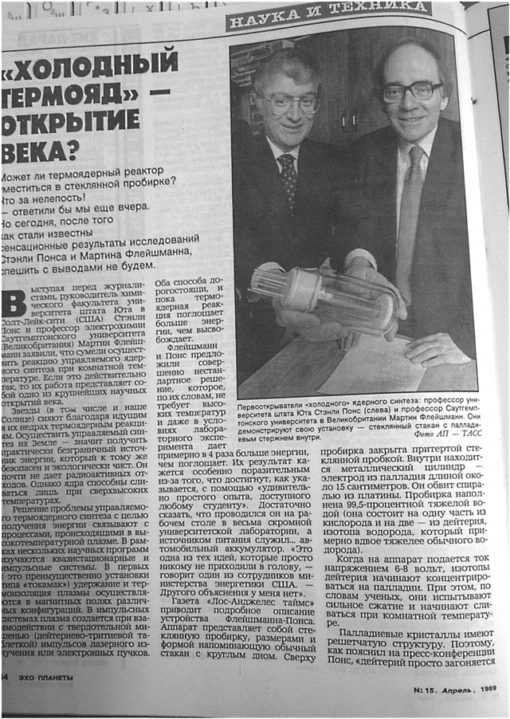
Fig. 3. The article “Cold thermonuclear – discovery of the century” in the weekly “Echo of the Planet”, No. 15, April 1989
On the basis of these newspaper publications, already in early April our group in the SF NIKIET was involved in the verification of the results. But we immediately went on our way.
At the same time, at the end of April, a “refuting” statement of the American Physical Society is published, and in May a number of tendentious newspaper publications appear, stating that Fleischmann and Pons’ data are incorrect, that they cannot measure heat, that, in fact, there is no tritium, etc. As they say, “all dogs were hanged on them”. They tried, of course, all this time to fight back . An attempt was even made to create the Institute of Cold Fusion for which a lot of money was allocated. However, the institute did not last long and was closed at the end of 1990. By 1991, pressure was exerted on the troublemakers so that Martin Fleischmann returned to Britain, and Stanley Pons had to resign from the University of Utah and move to work in France, having emigrated from the United States.
On the history of Martin Fleischmann and Stanley Pons’ harassment, I wrote an article that was published on December 12, 2017 in IA REGNUM entitled “About the pseudo-scientificness of cold fusion: in defense of Martin Fleischman and Stanley Pons’ electrochemists”, in which, I think, I was able to show that it was not a scientific criticism, but a harassment, the initiators of which didn’t disdain from either outright lies or purposeful falsification of results during the reproduction of the experiment. The April “denials” of the American Physical Society and the Massachusetts University of Technology were published a month after the March 23 press conference, while the reaction from Fleischmann and Pons was launched only on the 72nd day. For some reason, at first, nobody paid attention to this circumstance. “Examinations” were frankly “custom-made”, which later became clear, thanks to the investigation of Eugene Mallove. Even the accusations against Fleischmann and Pons, that they held a conference before they published a scientific article and allegedly deceived their co-author Professor Steven Jones, did not correspond to reality.
The main conclusion of my article is
“Cold nuclear fusion is not pseudoscience. Martin Fleischmann and Stanley Pons made a scientific discovery worthy of the Nobel Prize. ”
So I think today, and so we thought in 1989, we are convinced of the correctness of Fleischmann and Pons in their own experiments.
***
On the economics of cold fusion
We now turn to the question: why is it advantageous to engage in cold nuclear fusion for energy?
In preparing the report, I found such a table in the literature.
| The way to get energy | kWh/kg | J/g | Times greater than previous row energy |
| Burning oil (coal) | 11.6 | 42 kJ/g | 1 |
| In the fission of uranium-235 | 22.9 x 10^6 | 82.4 GJ/g | 1,974,138 |
| In the fusion of hydrogen nuclei | 117.5 x 10^6 | 423 GJ/g | 5 |
| The energy of a substance according to the formula E=mc^2 | 29 x 10^9 | 104.4 TJ/g | 247 |
Tab. 1. The amount of energy released in a certain amount of a substance with different methods of production.
With the complete burning of oil or coal, 11.6 kWh / kg is obtained. When uranium-235 is divided in atomic reactors by 1 kg, almost 2 million times more energy is released than by burning oil or coal. In the fusion of hydrogen nuclei, the energy is 5 times greater than in the fission of uranium-235.
And if you manage to release the total energy of a substance according to Einstein’s formula E = m · c2, then you can get 247 times more energy per kilogram of substance in relation to the fusion of hydrogen nuclei.
Next, I analyzed the estimate of the energy released during the fusion of hydrogen nuclei, and it turned out that the only thermonuclear reaction involving hydrogen that could give such an amount of energy per gram of substance, refers to a pair of tritium-protium. As a result, helium-4 (4He) and 19.814 MeV of energy are obtained:
3H + 1H = 4He + ϒ + 19.814 MeV
This reaction totals 474.936 GJ/g. And we, like Fleischmann and Pons, from the very beginning considered as a source of energy the fusion of deuterium nuclei (d + d reaction), which occurs inside the crystal lattice of a metal
d + d = 3He (0, 82 MeV) + n (2.45 MeV) + 3.270 MeV (1 channel)
= T (1.01 MeV) + p (3.02 MeV) + 4.033 MeV (Channel 2)
This fusion reaction is possible through two channels. The first channel is the formation of helium-3 (3He) with a neutron (n) with the release of 3.27 MeV of energy, and the second channel with the formation of tritium (T) and a proton (p) with the release of 4.033 MeV of energy.
For this classical nuclear fusion reaction, when the first and second channels are equally probable, the amount of released energy per gram of molecular deuterium is 87.45 GJ/g (G is Giga = 10^9), which is much less than given in Table 1 (423 GJ/g).
In their work, Fleischmann and Pons drew attention to the fact that they have tritium (T) recorded, as compared with neutrons, 11–14 orders of magnitude more than with the classical d + d reaction. If we take into account this increase in tritium yield in their reaction, confirmed later by the work of the Indian nuclear scientists, who had 7–11 orders of magnitude more tritium output than the neutron yield, then the energy per gram of molecular deuterium is 96.57 GJ/g . Thus, with this fusion reaction, one gram of deuterium can become a continuous source of heat with a capacity of 3.062 kW for a whole year. It is wonderful.
When we learned about the press conference of Fleischmann and Pons, we, a group of employees of the Sverdlovsk branch of the Research and Design Institute of Power Engineering (NIKIET branch named after N. A. Dollezhal – the famous NII-8), worked with titanium hydride. At that time, we were making a high-pressure hydrogen complex with hydrogen pressures up to 400 atmospheres. We had titanium hydride on hand, and expensive palladium, as they say, had to be searched for. Therefore, we took titanium and decided to test it in our own way by saturating titanium with deuterium from the gas phase. We ordered deuterium and tried to work with it at high pressures.
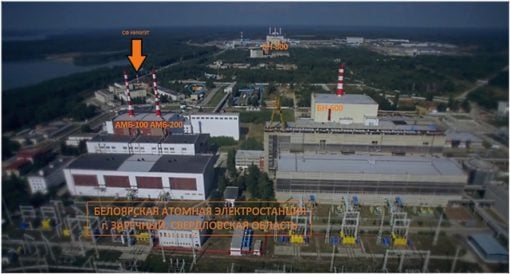
Fig. 4. Top view of the Beloyarsk NPP in Zarechny. The orange arrow indicates the complex of buildings of the SF NIKIET, inscription “NNF” marked where the group of Sergei Tsvetkov began work developing the cold nuclear fusion reactor in April 1989.
The question arises: why we immediately chose titanium intuitively, and then continued to work with it, despite the fact that Fleischmann and Pons used palladium, which is saturated with deuterium during the electrolysis process to produce palladium-deuteride. Discussing the question of how to intensify the process, we came to the conclusion that we need to introduce as much hydrogen or deuterium into the metal crystal lattice as possible in order to get recorded results on heat and on products of the proposed nuclear reaction. And here the following table helped us (Fig. 5).

Fig. 5. Table of binary hydrides in the periodic system from the book “Metal hydrides”. M. Atomizdat, 1973, p. 11.
Metal hydrides were very well researched in the 1960s. In 1973, we had a fundamental American monograph on this topic (see Metal hydrides. Edited by V. Muller et al. Translated from English. – M .: Atomizdat, 1973. – 432 p.). In this book there is a special periodic table, which shows which metal hydrides can form and in what quantities they can absorb hydrogen (Fig. 5). It can be seen from this table that titanium, zirconium and niobium form binary hydrides in which there are up to two hydrogen atoms per metal atom, and, say, palladium and nickel hydrides per metal atom can absorb no more than one hydrogen atom. Thus, it became obvious the advantage of working with titanium in comparison with palladium: titanium absorbs twice the amount of hydrogen, and, consequently, the fusion reactions could be expected at least twice as much.
We now consider Table 2, in which nickel, palladium, titanium, zirconium and niobium are compared in density, content in the earth’s crust, heat capacity, thermal conductivity and cost of these metals.
| Metal | Density g/cm3 | How many times heavier is Ti? | Content in earth’s crust,% by weight. | Heat capacity, J/ kmol | Heat conductivity, (300 K) W/(m*K) | Cost as of 09/19/17, USD/kg | Atomic mass, g/mol |
| Palladium | 12.02 | 2.65 | 0.000001 | 25.8 | 71.8 | 29191.31 | 106.42 |
| Titanium | 4.54 | 1 | 0.57 | 25.1 | 21.9 | 12 | 47.88 |
| Nickel | 8.9 | 1.96 | 0.0075 | 26.1 | 90.9 | 11.05 | 58.69 |
| Zirconium | 6.51 | 1.43 | 0.0165 | 25.3 | 22.7 | 129.09 | 91.22 |
| Niobium | 8.57 | 1.89 | 0.002 | 24.44 | 53.7 | 226 | 92.91 |
Tab. 2. Comparison of Pd, Ti, Ni, Zr and Nb according to several characteristics.
It is obvious that titanium clearly stands out against the background of other metals: it is the lightest of all, in the earth’s crust it is the most, its heat capacity and thermal conductivity are rather small, and its cost is low. It is comparable to the cost of nickel, but in terms of its prevalence in the crust, even no attention should be paid to nickel. Thus, it turned out that titanium can and should be used. These were the reasons we had to do titanium.
Most recently, I found my first job in the USSR to saturate titanium with hydrogen. Employees of the Leningrad Polytechnic Institute, Yu. V. Baymakov and O. A. Lebedev, published an article titled “Titanium and Hydrogen” in the collection “Proceedings of the Leningrad Polytechnic Institute” No. 223 for 1963, in which they reported on the thermal effect obtained during the formation of titanium hydride on titanium powder.
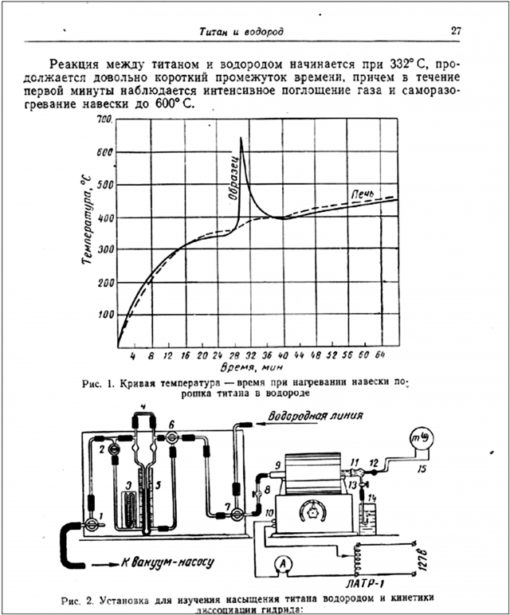
Fig. 6. A plot of temperature versus time for heating titanium in hydrogen and a setup diagram for titanium saturation with hydrogen from the article by Yu.V. Baymakov and O. A. Lebedev “Titanium and hydrogen” of 1963.
In the experiment with the formation of hydride, excess heat was recorded in the amount of 16.7 kcal / mol. But the calculated data, which are given in the article:

Fig. 7. Calculation of excess heat generation during the formation of titanium hydride from the article “Titanium and hydrogen” by Yu. V. Baymakov and O. A. Lebedev in 1963
The formation of hydride takes 120 kcal and 103 kcal is spent on the dissociation of hydrogen molecules, that is, the formation of atomic hydrogen. But in the end, all the same, there remains excess heat equal to 14% – this is quite a lot. If we calculate the excess power factor, that is, the ratio of heat expended (120.5 kcal) to excess heat (16.7 kcal), then this will be slightly more than seven. This feature has a titanium, which has been undeservedly ignored in recent studies on cold nuclear fusion.
On the basis of the equipment and materials that we prepared for the high-pressure hydrogen complex, in April 1989, the first experimental setup was created to obtain nuclear fusion reactions in deuterated titanium (Fig. 8).
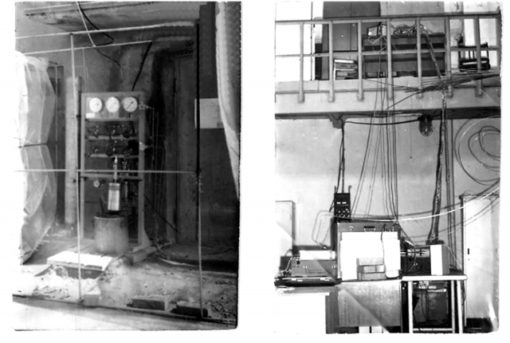
Fig. 8. The first installation of 1989 for the study of cold nuclear fusion in SF NIKIET. On the left – the high-pressure gas part, on the right – an experimental cell with detectors.
Let me remind you that this story takes place at the Sredmash Research Institute (Ministry of Medium Machine-Building of the USSR), at the Sverdlovsk branch of the Research and Design Institute of Power Engineering (SF NIKIET), which is the site of the experimental reactor of the Moscow NIKIET them. N. A. Dollezhal engaged in the creation of nuclear energy facilities and installations for military and civil purposes.
We expected that we could get very high deuterium pressure, for which a special container was prepared at the facility. It was assumed that we can get a hydrogen pressure of 400 atmospheres. We thought that if we do not get a nuclear fusion reaction at low pressures, then we can achieve a positive effect at high pressure. But this was not necessary. In Fig. 9 that the experimental cell is surrounded by various detectors. We had several systems for measuring nuclear radiation: two detectors were used for gamma radiation, there were track neutron detectors (marked in figure 2).
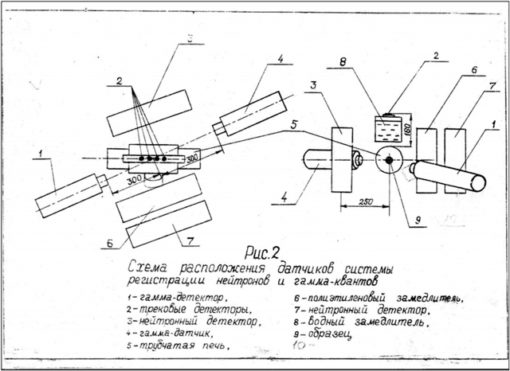
Fig. 9. Layout of the sensors of the neutron and gamma quanta registration system.
It was a thin mica-muskavit with a diameter of several centimeters with thin layers of uranium-235 and neptunium-237 applied to it. The distance at which these track detectors were located was calculated so that the 2.45 MeV neutrons that Fleischmann and Pons registered were slowed down to such energies when interacting with distilled water as a moderator – (8), so that mica Muskavit to leave their tracks of fission fragments of uranium or neptunium by slow neutrons. Gas-discharge helium-3 counters were also used in neutron detectors (7). Moreover, the detectors for gamma radiation and neutrons were duplicated, for example, up to 15 counters were used in the same neutron detector for neutron registration. Therefore, the registration system was very clear and reliable, with high resolution of neutrons and gamma radiation. The synchronous operation of two sensors independent of each other meant that not random artifacts were recorded, but really neutrons and gamma radiation.
In Fig. 10 shows our very first reactor.

Fig. 10. The first reactor for the production of cold fusion reactions on deuterated titanium, designed in the SF NIKIET in 1989.
A sample of cylindrical titanium hydride with a diameter of 9.5 mm (1) and a length of 70 mm was placed in a stainless tube with an internal diameter of 10 mm. Chromel-alumelic (XA) thermocouples in a sealed stainless steel case with a diameter of 1.5 mm (6, 7) were inserted into the tube on both sides. The entire titanium sample outside the tube was surrounded on all sides by a Peltier calorimeter (2), which was made on the basis of chromel-alumelium thermocouples. The calorimeter was calibrated using an independent heat source, for which, instead of a titanium sample, a model was inserted from a nichrome heater to which current was applied, voltage was measured, its power consumption was calculated. We measured the calorimeter’s response to such heating and thus calibrated it by the excess heat at operating temperatures.
In Fig. 11 shows the results of the first studies obtained on the titanium-deuterium system (Ti-D).
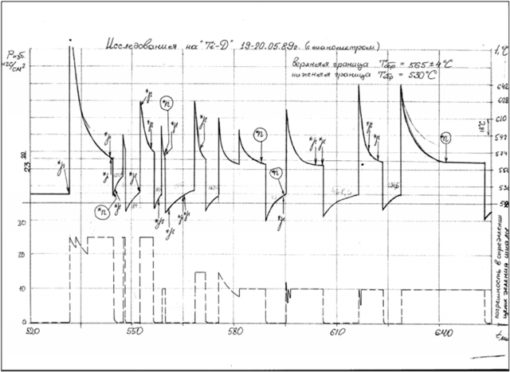
Fig. 11. Studies on the titan-deuterium system, May 19–20, 1989.
This happened on May 19–20, 1989. Here it can be seen that, in addition to excess heat, high temperatures (up to 800ºС and above), gamma radiation and neutrons were recorded. And the letters “n” circled on the graph show the moments of synchronous operation of two neutron sensors located opposite each other. Between the sensors was a titanium-deuterium system.
The experimental results obtained in the spring of 1989 unequivocally proved that the cold nuclear fusion phenomenon exists, and not only in the “palladium-deuterium” system, with which Fleischmann and Pons worked. We were busy saturating titanium from the gas phase. Our idea was that all these reactions take place in those metals and alloys that absorb and release deuterium. That is, we made this reactor in order to obtain the following cycle: saturation with deuterium, then degassing of titanium deuteride — pumping, and neutrons and gamma radiation were also recorded during pumping.
In Fig. 12 shows the results that we have obtained.
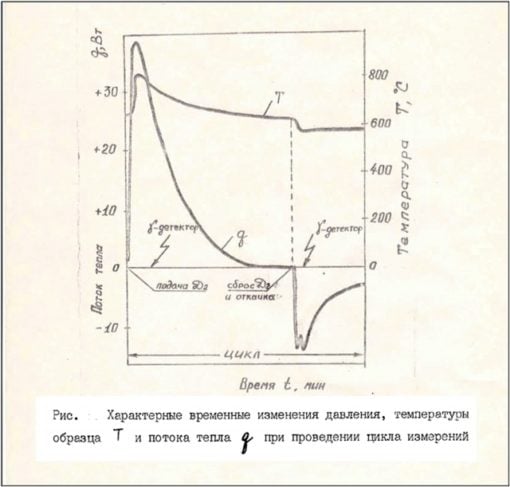
Fig. 12. Pressure change, titanium sample temperature and heat flux.
This is where the fun begins. If we compare the heat flux from the titanium sample at the saturation of titanium with deuterium and during the degassing of titanium deuteride – pumping, that is, the release of deuterium from titanium, then the ratio of the heat released during saturation to the heat spent during pumping will be about two (1.96). Thus, when deuterium is absorbed, a lot of heat is released, and when it is pumped out, heat is absorbed, but in smaller quantities. This is the first work that showed that when titanium is saturated with deuterium, excess heat is produced, which is released when titanium hydride is formed and the nuclear fusion reaction accompanies it.
The maximum heat release in the first cycle of experiments reached 39.3W. On one gram of titanium, it generates 2.6 W/g. The value is not very high, but it was received, reliably recorded and well calculated.
According to the results of these works, we made two applications for copyright certificates on the method of performing the reaction of low-temperature nuclear fusion, which was carried out by saturation and degassing. We had a hypothesis that at high saturation of titanium with deuterium, phase transitions occur in titanium deuteride, and at phase transitions the structure of the crystal lattice of titanium changes. And we in our first papers tried to check this hypotheses. It turned out that the majority of neutrons and gamma-rays are recorded at the very moment when the titanium-deuterium system passed through the beta/gamma-deuteride phase boundary of titanium. It is on this way of implementing the nuclear fusion reaction using the phase transition from the beta phase to the gamma phase and back we have applied for copyright certificate.
Further, on the basis of this method, the application “Nuclear fusion reactor” was developed. This application has already proposed to place the titanium-deuterium system under the nuclear reactor under the neutron flux in order to intensify the fusion reactions and get more heat. In the list of authors of the essay of the first article prepared for publication, a team was presented that began to deal with it: Bunkov V.V., Bondarenko N. B., Vlasov V. I., Zlokazov S. B., Kadnikov V. P., Maltsev A. G., Nikiforov A. D., Novikov P. I., Safonov V. A., Shentsev V. M., Tsvetkov S. A
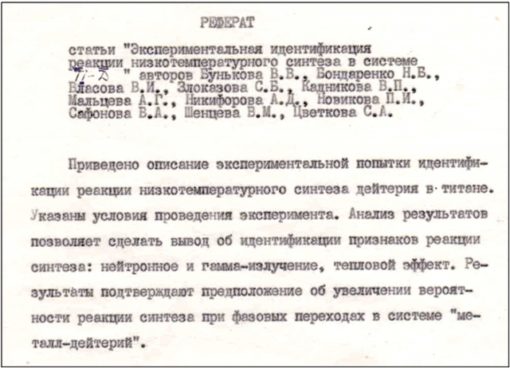
Fig. 13. Abstract of the article “Experimental identification of the reaction of low-temperature fusion in the Ti-D system” 1989.
Contrary to the assurances of thermonuclear fusion specialists that the participants in this study were supposed to be overexposed by neutrons, many of these people are still alive and actively working, and only a few of them died in old age, one of whom was the liquidator of the Chernobyl accident.
Then we did the job of determining the initiation of nuclear fusion reactions in titanium deuteride when exposed to laser radiation. For this, the following scheme was developed. A quartz window reactor was made, a sample of titanium deuteride was placed in this reactor. Then air was pumped out of the reactor and a deuterium atmosphere was created with a pressure of 14 atmospheres. Through a quartz window, a pulsed laser affected the end of the sample inside the reactor, with neutrons and gamma radiation being recorded.
In September 1991, the results of this work were published in the journal of the American Nuclear Society Fusion Technology. At that time, the editor of this journal was George Miley, who suggested that we publish an article.
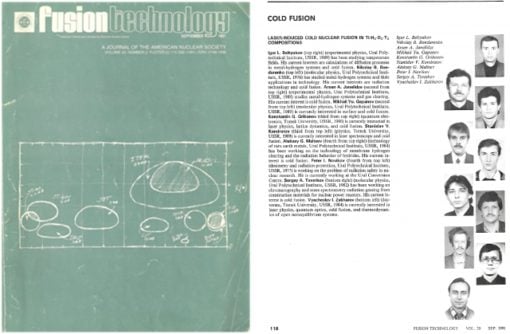
Fig. 14. The cover of the September issue of the journal Fusion Technology and the first page of the article “Laser-induced cold nuclear fusion in Ti-H2-D2-T2 compositions”.
At the end of this article, calculations were made of a gamma-based creation, which we recorded in the experiment, of a gamma laser.
* * *
A little about yourself, friends and colleagues
I am a nuclear physicist. I have a specialization in “Physics of Nuclear Reactors”. I graduated from the Physics and Technology Faculty of the Ural Polytechnic Institute in Sverdlovsk in 1982. I had a diploma on the subject “Study of thermal decomposition of irradiated and non-irradiated polyimides”. I have two specializations: nuclear reactor physics and isotope separation.
I started working in the Sverdlovsk branch of the Research and Design Institute of Power Engineering in Zarechny, Sverdlovsk Region. The first work on cold nuclear fusion was also carried out there. And then life was so ordered that perestroika began, various incomprehensible events began until the end. As a result, I got into the group of Academician of the Academy of Sciences of the USSR Alexei Nikolaevich Baraboshkin at the Institute of High-Temperature Electrochemistry of the Ural Branch of the Russian Academy of Sciences. Then, in 1993–1995, work began that was funded by the American firm ENECO. To us, they specifically financed the work on the interaction of strontium cerate with deuterium. As a result of this work, we filed an application for the international patent “Methods and devices for producing neutrons from solid-state proton conductors”.
Aleksey Nikolaevich Baraboshkin, together with then-corresponding member Boris Vladimirovich Deryagin, tried to organize and launch the All-Union scientific research program on cold nuclear fusion in 1990-1991. It was developed in sufficient detail. 32 organizations were supposed to participate in it: 12 institutes of the USSR Academy of Sciences, 9 branch institutes of the IEP of the USSR, 8 universities, 5 academicians of the USSR Academy of Sciences and 5 corresponding members of the USSR Academy of Sciences. At that time, they estimated this program at 15 million rubles and plus 3 million foreign currency rubles and planned to carry it out in four years. The draft program is published on the CTIA and CMM website and in the REGNUM news agency. This is about what they managed to do at the Institute of High-Temperature Electrochemistry of the Ural Branch of the USSR Academy of Sciences.
In 1993, Academician A.N. Baraboshkin held a meeting on this program in order to try to conduct it through the Department of Chemistry of the Russian Academy of Sciences. We gave reports there. I then came with the doctor of chemical sciences Kabir Akhmetovich Kaliev, and we tried to make a demonstration of his work on tungsten bronzes at FIAN. Together with academician A.N. Baraboshkin, they then tried this option. They used tungsten-sodium bronze; sodium was removed by electrolysis at high temperature in a vacuum, as a result of which channels were formed. Then deuterium was let in at room temperature. At the same time neutrons and heat increase were recorded. This work they published in Physics Letters A in 1993.
In 1995, Academician A.N. Baraboshkin died, after which our team broke up, and the “fermentation” began.
In 1996, I had a small business trip to the Joint Institute for Nuclear Research in Dubna, where Kabir Kaliev and I repeated his experiments. Using a high-quality neutron sensor, we recorded neutron pulses. They worked out the technology for producing tungsten-sodium bronzes in order to obtain stable results, because in these experiments, instability was first observed, which, as it turned out, was associated with the structure of these bronzes. It was necessary to grow these bronzes very carefully.
After that, I made an attempt to restore and make a new installation with deuterated titanium at the Institute of Industrial Ecology of the Ural Branch of the Russian Academy of Sciences in Yekaterinburg, but it ended in nothing. Then again the Institute of High-Temperature Electrochemistry, UB RAS. There, work was carried out on the electrolysis of molten salts of KCl, LiCl and LiD. They melted at 300ºС, for which an electrode was used, which was lowered into a container with salts. I worked with a titanium electrode and got excess heat. An article was written on this research cycle that was published for a very long time. In the end, it was published in 2005 in the journal “Rasplavy” of the Ural Branch of the Russian Academy of Sciences.
But then the “struggle for survival” began, where in fact I did not work for a long time, which in 2009 led me to be a junior researcher at the Department of Theoretical Physics and Applied Mathematics at the Ural State Technical University and the Ural Polytechnic Institute in Yekaterinburg.
In 2011, I retired. And then unexpected events began: I was invited to Germany and offered to restore the installation of cold fusion on titanium. I agreed, I came to Nuremberg, and we started working there with private money.
In addition, at this time a number of works was published. Here are the most important from my point of view:
1. Igor L. Beltyukov, Nikolay B. Bondarenko, Arsen A. Janelidze, Mikhail Yu. Gapanov, Konstantin G. Gribanov, Stanislav V. Kondratov, Aleksey G. Maltsev, Peter I. Novikov, Sergey A. Tsvetkov, Vyacheslav I. Zakharov Laser-Induced Cold Nuclear Fusion in Ti-H2-D2-T2 Compositions. // Fusion Technology, 1991, Vol. 20, No. 2, pp. 234−238.
2. I. L. Beltjukov, N. B. Bondarenko, A. A. Dzhanelidze, M. J. Gapanov, K. G. Gribanov, S. V. Kondratov, A. G. Mal’tsev, P. I. Novikov, S. A. Tsvetkov, V. I. Zaharov. Laser system for Ti-H2-D2-T2 // Physics of metals and metallurgical science, No. 6, 1992, pp. 138−143.
3. K. A. Kaliev, A. N. Baraboshkin, A. L. Samgin, V.S. Andreev, S.A. Tsvetkov. Influence of Electrochemical Treatment on Sodium – Tungstic Bronzes // Abstracts of the International Conference, “Minsk, Belarus, May 25–27 1993, pp. 119−120.
4. S. A. Tsvetkov. Initiation of Cold Energy Fusion // Theses of the international conference, “Possibilities of Ecological Clean Energy Production and Energy Conservation”, Minsk, Belarus, May 25–27, 1993, p. 134.
5. S. A. Tsvetkov, N. B. Bondarenko, I. L. Beltjukov, A. N. Varaksin, A. A. Zivoderov. Calculation of the transitions in the system of Pd-D and cold nuclear fusion // Physics of metals and metallurgical science, Vol. 76, Iss. 4, 1993, pp. 94−97.
6. A.L. Samgin, A.N. Baraboshkin, V.S. Andreev, I.V. Murygin, V.P. Gorelov, S.V. Vakarin, S.A. Tsvetkov, A.L. Shalyapin, A.G. Golikov, L.N. Fomina. Neutron generation in solid protonic conductors with perovskite-type structure // ICCF-4, December 6–9, 1993, Lahaina, Hawaii, Vol. 1, No. 2.7.
7. A. L. Samgin, A. N. Baraboshkin, I. V. Murygin, S. A. Tsvetkov, V. S. Andreev, S. V. Vakarin. ICCF-4, December 6–9, 1993, Lahaina, Hawaii, Vol. 1, No. 4.2.
8. A. L. Samgin, A. N. Baraboshkin, I. V. Murygin, S. A. Tsvetkov, V. S. Andreev, S. V. Vakarin. The Influence of Conducting Solid Electrolytes | Proceedings ICCF-4, December 6-9, 1993, Lahaina, Hawaii, EPRI, Palo Alto, California, Vol. 3; Nuclear Measurements Papers, pp. 5−1 ÷ 5−7.
9. Samgin AL, Finodeyev O., Tsvetkov SA, Andreev VS, Khokhlov VA, Filatov ES, Murygin IV, Gorelov VP, Vakarin SV; 5th International Conference on Cold Fusion, April 9–13, 1995, Monte-Carlo, Monaco, pp. 201-208.
10. S. V. Vakarin, A.L. Samgin, V.S. Andreev, and S.A. Tsvetkov. Influence of sodium chloride tungsten per crystals of the International Conference on Cold Fusion, April 9–13, 1995, Monte-Carlo, Monaco, pp. 227-232.
11. V.A. Khokhlov, E.S. Filatov, A.L. Samgin, V.S. Andreev, S.A. Tsvetkov, A.V. Cherepanov, O. Finodeev. Thermal Effects on the Pd-anode at the saturation of the electrolytic or hydrogen in molten salts // Cold nuclear fusion. Materials 2 Russian conferences on cold fusion and transmutations of the nucleus, Sochi, September, 19−23, 1994, Moscow, RFO, 1995, pp. 117–122.
12. Tsvetkov SA, “Cold Nuclear Fusion Initiatives”, Russian Federation Conference on Cold Fusion , 1996, pp. 281−294.
There have been publications on the interaction with laser radiation. There have been attempts to participate in international conferences. I want to draw attention to the fact that in 1995, when I had the opportunity to go to Monte Carlo to the 5th International Conference on Cold Fusion (ICCF-5), we began a correspondence with Martin Fleischmann. In the letter below, he sends me his regards and informs me that they will take over the financing of my trip to ICCF-5. So we met him in absentia.
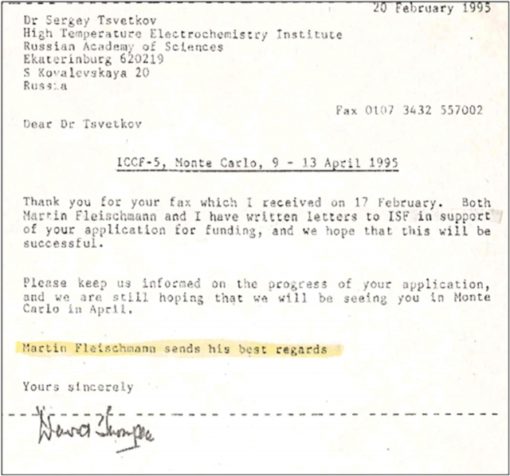
Fig. 15. Sergey Tsvetkov’s invitation to ICCF-5 with best wishes from Martin Fleischmann dated February 20, 1995.
I can say that from the very beginning we carried out all control experiments with hydrogen very carefully. In the first paper of 1989, we saturated titanium with hydrogen. Excess heat was obtained, but we did not register any nuclear products — neither neutrons, nor gamma radiation. And so we switched to deuterium. On deuterium, the heat additive compared to hydrogen was very large. If hydrogen is a matter of watts, then deuterium is dozens of watts, and today there is a kilowatt of excess heat on titanium.
Stages of development and organization with which I had to work since 1989:
Year Organization
1989-1993 SFNIKIET
1990−1992 Small enterprise SORUS
1993−1995 IHTEC UD RAS, ENECOUSA
1996 JINR
1997 IPE UrB RAS
1994–2015 RFBR
1997−2017 Rospatent
2000–2001 HCF
2003−2006 IHTEC UrD RAS
2007 RUSNANO, Russian innovations
2007–2009 GFEN, China
2012-2015 AEE AG GmbH, Germany
2012- … Euro patent 2013 European Commission on Energy
2014 NationalInstruments, USA
2014 AREVA, France
2015 AIRBUS Group
2015−2017 UrFU
2017 JSC Russian Railways
2018 ARPA-E, USA
2018 Deneum, Estonia
There are small enterprises and institutes of the Academy of Sciences of the USSR and the Russian Academy of Sciences. The RFBR (Russian Foundation for Basic Research) is a separate entity. They said that it was necessary to somehow resolve the issue of financing cold fusion research. I can say that I have a unique “achievement” in relations with the RFBR on this issue. From 1994 to 2015, I submitted 30 applications to the Russian Foundation for Basic Research for grants for research on cold nuclear fusion. The only success was received in 2007 under a Russian-Chinese grant, for which we submitted a joint application with Professor Xing Zhong Li from China. He received a grant, but they did not give me one. Professor Li spent three years on this grant, which was associated with the diffusion of deuterium in palladium.
* * *
Comment REGNUM
It turns out an interesting situation: China, Japan, India, South Korea, Italy, the USA, etc. Cold fusion research is needed for solving strategic civil and military tasks, and therefore they finance these works from their scientific and military state budgets, like when in the USSR, and in post-Soviet Russia, especially after the death of Academician A.N. Baraboshkin, for some reason they became absolutely unnecessary and turned into pseudoscience. What does this mean? The question for over 20 years remains unanswered.
* * *
I have not previously said that we performed the molecular dynamics calculation work on the behavior of deuterium in palladium, which also considered phase transitions between the alpha and beta phases in palladium deuteride. If titanium deuteride has three phases, between which there are two interphase transitions, then palladium has only one phase transition between alpha and beta phases. Therefore, the presence of three phases in titanium deuteride suggests that the process in titanium should go better. So it turned out.
Titanium has shown itself to be much better in energy than palladium: in reactors with deuterated titanium, tens and hundreds of watts of excess heat per gram are produced today, while in installations with palladium, milliwatts are still obtained, as in the days of Fleischmann and Pons.
In 2013, at a meeting of the European Commission on Energy, at which prospects for the industrial introduction of cold nuclear fusion installations were discussed, a report was made on the basis of a report by economists from Gazprombank on the use of palladium reactors:
“There is certainly excess heat when using a technological scheme with palladium, but it is too little to create promising power plants. Give us so much heat to steam the turbine, and then we will give you the money. ”
However, despite this conclusion, as Italian physicist Vittorio Violante from the Italian National Atomic Energy Agency (ENEA) told me later, in the same 2013 he received a € 0.5 million grant from the European Commission for his work with palladium, which he worked from 2013 to 2015.
* * *
Vladimir Tsaryov
I would also like to tell about those people who participated from the very beginning in cold fusion research in the USSR and the Russian Federation and with whom I was personally acquainted. The first of them is the head of the department of the Physical Institute of the Russian Academy of Sciences. P. N. Lebedeva, Doctor of Physics and Mathematics Vladimir Aleksandrovich Tsarev.
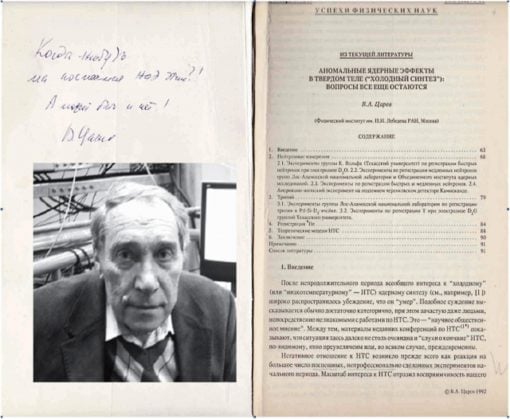
Fig. 16. U-turn of the author’s copy of the article in V. Tsarev, Uspekhi Fizicheskikh Nauk Physics Sciences, “Abnormal nuclear effects in a solid body (” cold fusion “). Questions still remain,” published in 1992, with a photo and autograph of the author.
He started very well, was interested in cold fusion and managed to publish, in my opinion, two or three very large solid reviews on cold fusion, about what directions there are, how they are developing. I advise everyone to get acquainted with these fundamental reviews, which describe in detail how it all began. We met at a meeting of the chemistry department of the Russian Academy of Sciences, and he gave me his copyright copy of one of these reviews and wrote:
“Someday we laugh at this ?! Or maybe not!”
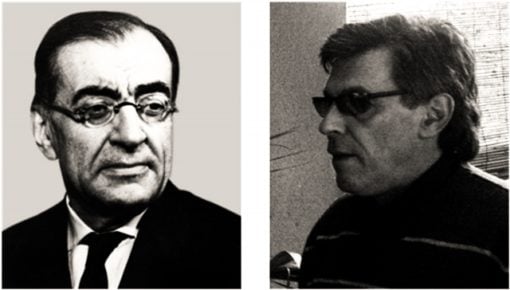
Fig. 17. The authors of the first open Soviet study on cold nuclear fusion; Academician of the Russian Academy of Sciences B. V. Deryagin and Candidate of Chemical Sciences A. G. Lipson.
I want to pay special attention to the work of the group of Academician Boris Vladimirovich Deryagin. Under his leadership was defended the only candidate dissertation on the study of cold nuclear fusion. Its author, Andrey G. Lipson, is called “Electrophysical Processes on Freshly Produced Surfaces of Solids”, defended in 1986, three years before the press conference of Martin Fleischmann and Stanley Pons.
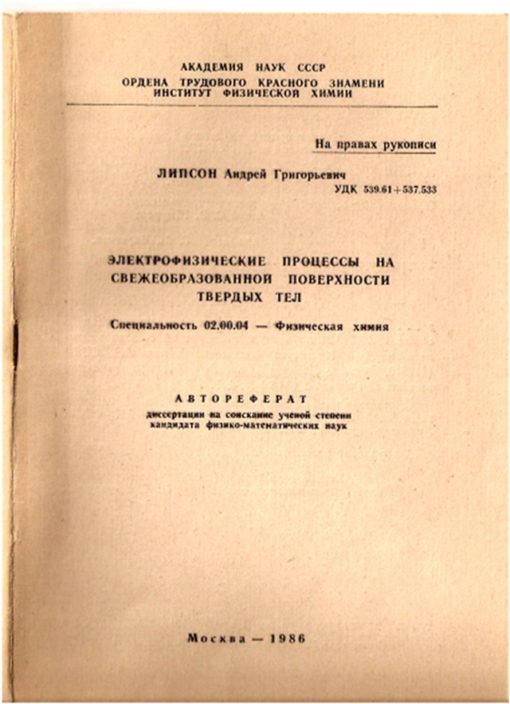
Fig. 18. The cover of the author’s abstract of the Ph.D. thesis of A. G. Lipson “Electrophysical processes on a freshly formed surface of solids”, protected under the supervision of Academician B. V. Deryagin in 1986.
fuIn the experiments of Boris Deryagin and Andrei Lipson with the help of a copper hammer, they used to pick up “heavy” (deuterated) ice (D2O) and at the same time get high-energy electrons and neutrons. As far as I know, this is the only dissertation on cold fusion that has been defended in the USSR and post-Soviet Russia. I also tried twice to start writing dissertations on cold fusion in the Russian Academy of Sciences, but both times it ended at the stage of agreeing on the topic and approving it at the scientific council of the institute.
Unfortunately, Andrei Lipson died early. He and I, at the 7th International Conference on Cold Synthesis in Vancouver in 1998, prepared a report on the necessary conditions for the implementation of cold nuclear fusion. It was assumed that in the interaction with deuterium phase transitions should take place in the solid, and the surface of the solid should be very large. An optimal time for the implementation of a phase transition in deuterium-solid body systems is necessary, that is, in addition to saturation, it should go at a certain speed. If the saturation goes too slowly, then we do not register the products of the nuclear fusion reaction and we cannot say that nuclear fusion occurs at all. At a certain rate of saturation, nuclear fusion products are recorded. We noticed this moment in the first experiment – the background of neutrons in a solid is necessary. This idea was practiced by Andrei Lipson, he had many such works. He worked on KD (2) PdO (4) – in such a complex system. And in the end, he received excess neutrons when a small source of neutrons was placed next to this system. He supplied deuterium there, heated the sample, and neutrons of very large values were recorded.
The presence of oxygen in the “deuterium-solid” systems is also necessary. This condition is required. In our first papers, we noticed that if you add some air to deuterium, then the neutron yield increases dramatically 300 times.
In 1997, I patented a method for obtaining a nuclear fusion reaction with the addition of air to deuterium and in 2000 received a Russian patent. Here we are talking about a specific method of obtaining nuclear fusion using titanium.
* * *
Andrea Rossi
Separately, I would like to tell you about the famous Italian Andrea Rossi, whom I managed to meet in 2012 in Zurich. In Fig. 19 Andrea Rossi gives me an autograph on his patent application for cold fusion. We then corresponded with him. He knows and remembers me.
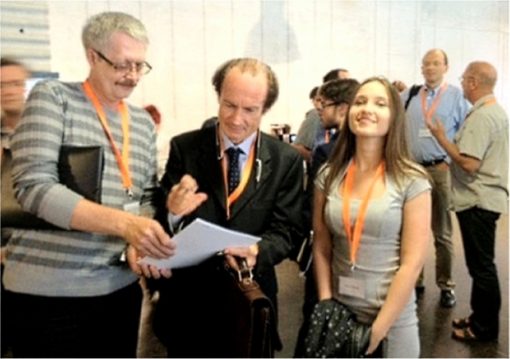
Fig. 19. Andrea Rosii signs on a copy of his patent, presented to Sergey Tsvetkov.
It so happened that the famous Italian nuclear physicist Professor Sergio Focardi separated from another famous Italian physicist, Professor Francesco Piantelli, and began to independently engage in cold fusion research in the mid-1990s, and in the early 2000s Andrea Rossi joined Foccardi, and they made an operating device for obtaining excess heat in the interaction of hydrogen with nickel. It was demonstrated by them at the University of Bologna in Italy in January 2011.
At first they had a small reactor, then they created a megawatt heat generator in which 132 reactors of small reactors were combined. Hydrogen was supplied to nickel, and water was pumped outside, which removed heat and reached the boiling point and even higher – up to 102–103 ° C. This water then gave out 1 MW of thermal energy due to hydrogen-nickel reactions. Rossi then used gaseous hydrogen. His reactor worked at low parameters, that is, the temperature of the powder that was loaded into the reactor reached only 300–400 ° C.
Then the results of Focardi and Rossi were repeated by researchers elsewhere in the world. After a repetition of experiments such as in Switzerland by a group, by Giuseppe Levi, by Alexander Parkhomov in Russia, carefully read the reports and repeated their work. Remarkably, the person did not like most: they ran “over the tops”, concluded that this could not be, because this could never be. No, he understood the details, successfully reproduced the result and now he is constantly improving the operating parameters of his reactor.
* * *
Cold Fusion – Dual Purpose Technology
In 2009, the report of the US Department of Defense Intelligence Agency “Technology Forecast: Increasing and Gaining Acceptance” was presented on the state of technology for obtaining cold nuclear fusion reactions in various countries around the world. This was not a secret report.
Naturally, the question arose of what is true in this report and what is disinformation. In particular, this report contained the following phrase regarding one of my work on the processing of radioactive waste:
“If nuclear particles can be obtained and elements can be converted using them, then low-energy nuclear reactions can be used to reduce the risk of nuclear waste or to neutralize weapons of mass destruction? 48”
Link 48 points to my work: Tsvetkov, S.A. “Waste Products Transmutation for Nuclear Fusion”, 10th International Conference on Cold Fusion, Cambridge, MA, 2003, [.pdf] from LENR-CANR.org website.
This paper was published in 2006 in the proceedings of the 10th International Conference (ICCF-10), which Peter Hagelstein organized at the Massachusetts Institute of Technology. I had to make several reports there, and it was one of them, which was called “The possibility of using cold fusion for the transmutation of nuclear waste”. It considered the processing of nuclear waste using fast reactors in the cross section for the interaction of neutrons with cesium and strontium. I considered only two of these radioactive isotopes from the entire spectrum of nuclear waste. On the basis of my experimental data on the number of neutrons registered at cold fusion reactors, I calculated the time for “burning out” radioactive waste and compared it with similar parameters that were obtained in fast neutron reactors. It turned out that for the afterburning of nuclear waste, cold fusion neutrons are more profitable and more convenient to use than fast neutron reactors.
In connection with the report of the intelligence agency of the US Department of Defense, I had a question: why do our military show strange indifference to research on cold nuclear fusion? Perhaps one of the reasons for this situation is precisely the fact that cold fusion neutrons can destroy atomic and hydrogen bombs by transmuting the nuclei of fissile material, making atomic bombs and missile warheads inoperable, in fact disarming the strategic forces of the nuclear powers. This feature makes missile defense unnecessary, deprives the military itself of the huge amount of money they now spend on outdated devices that play the role of scenery in the actions of intimidation of humanity and do not bring any tangible benefit, wasting time and energy, to eventually turn into in the sand.
It is quite obvious that on the Titanium-Deuterium system and its ilk, it is easy to make “hand-grenades” to disable bombs and warheads of missiles. Perhaps this is one of the reasons why our military does not really want to develop cold nuclear fusion, which, however, cannot be said about the American military – just look at the latest US government reports on military research and development in the field of cold fusion.
* * *
Vladimir Balakirev
For many years I have been cooperating with Vladimir Fedorovich Balakirev, Corresponding Member of the Russian Academy of Sciences. Some time after the appearance of the report by the US Defense Secretary, Vladimir Fedorovich received a letter from the Committee on Energy of the State Duma of the Russian Federation, in which he was officially asked to express his opinion on this report, as well as on research on cold fusion in general. The American report stated that there are promising results on cold fusion, everything is fine. And while government funding is not worth it, they say, let the business invest in this area first, and we will see what happens.
Comment REGNUM
Today we know that the situation around cold fusion after the Fleischmann and Pons conference developed from the mid-1990s according to the traditional US scenario: first, risky, high-cost research and breakthrough high-tech developments are implemented with state money, and then a play of their privatization under the guise of living embodiments American dreams such as Bill Gates, Ilon Musk and the like. According to this scheme, military IT-development, pharmaceutical, space, etc. were privatized. Today, the USA does not hide that for the past 25 years the Pentagon, the US Navy, DARPA, the space agency and the largest aviation American corporations have funded work in the field of cold fusion (see for example, a report that is frightening in its frankness (United States Government LENR Energy 2018).
* * *
Vladimir Balakirev wrote a response for the State Duma, in which he argued, and in this I fully support him, that cold nuclear fusion or low-energy nuclear reactions “are fundamental in their essence and are able to lead humanity into a new orbit of existence.”
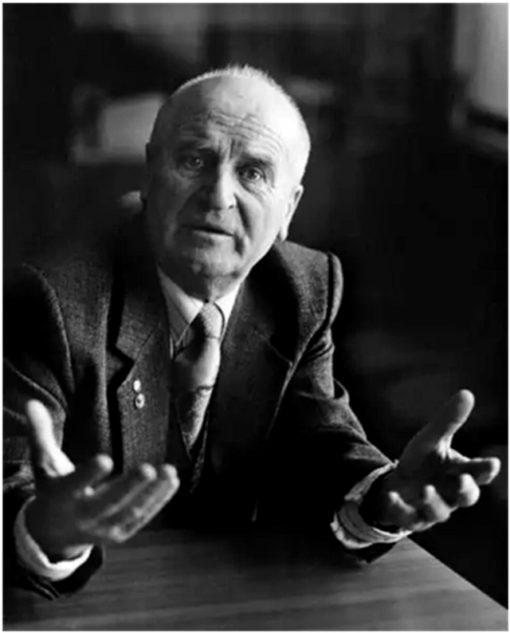
Fig. 20. Corresponding Member of the Russian Academy of Sciences, State Prize Laureate Vladimir Balakirev.
The letter to the State Duma also listed promising areas for the use of cold fusion, such as:
– obtaining cheap, environmentally friendly thermal and electrical energy;
– single-wire and wireless transmission of electromagnetic energy;
– obtaining all chemical elements and scarce isotopes;
– the use of “strange” radiation;
– obtaining sources of highly targeted x-ray radiation (x-ray lasers).
V.F. Balakirev’s letter to the State Duma on cold fusion is actually only part of a huge correspondence between the Russian government, the Ministry of Defense, the State Duma and the Russian Academy of Sciences with scientists and each other in connection with the publication of the US Department of Defense report on cold fusion. We wrote letters, in response we received answers from the Russian Academy of Sciences, from the Ministry of Defense. The low level of scientific reasoning used by opponents of cold fusion in this correspondence, the obvious commitment of their assessments, combined with the lack of knowledge of the works mentioned in the American report, are worthy of analysis in a separate publication. Their position is unshakable: cold fusion is pseudoscience, the report of the US Defense Department is disinformation, the purpose of which is to direct our weakened intellectual forces along the wrong path.
Before our conference, I met with VF Balakirev. He cannot come from Yekaterinburg, but he said hello to all the participants and signs our welcoming address to colleagues from the USA.
* * *
On the attempt to create a laboratory in the Ural Federal University
Then I started in my alma mater, the Ural Federal University (UFU), organizing seminars on cold fusion. Here is the protocol of one of the seminars at the Department of Technical Physics, in which it is stated that the specialists and the management of the department support this area and talk about the need for public funding.
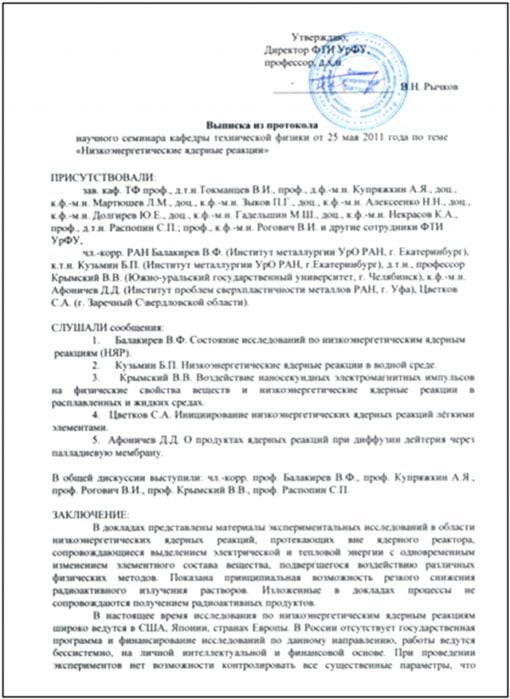
Fig. 21. Extract from the minutes of the scientific seminar of the Department of Technical Physics from May 25, 2011 on the topic “Single-nuclear nuclear reactions”.
In 2015, the seminars developed into the idea of organizing a laboratory on low-energy nuclear reactions at the Faculty of Physics and Technology of Ural Federal University.
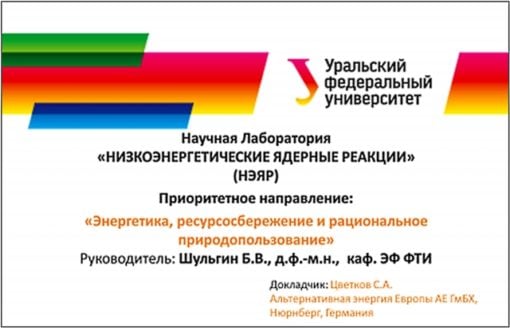
Fig. 22. Title of the presentation of the grant application for the development program of the Ural Federal University.
The head of the laboratory was to be the doctor of physical and mathematical sciences B. V. Shulgin. To organize the laboratory, we applied for projects to receive grants for the development of the university several times. The idea of creating the laboratory was actively supported by the famous theoretical physicist from the Massachusetts University of Technology Peter Hagelstein, who today, March 23, 2019, should open a memorial colloquium for the 30th anniversary of cold fusion in Cambridge in a few hours. Hagelstein gave official consent to become a laboratory supervisor and work in UrFU for at least four months a year.
Then from Yashuhiro Iwamura, a professor at Tohoku University from Japan, who heads the Japanese cold fusion program (NEDO), I also received support for the idea of creating a laboratory in UrFU.

Fig. 23. Famous foreign scientists who supported the idea of creating a cold fusion laboratory in Ural Federal University: left MIT professor Peter Hagelstein and head of the Japanese state program NEDO cold fusion professor at Tohoku University Yashuhiro Iwamura.
European wanderings
In 2012, I managed to get to Nuremberg and organize a laboratory there.

Fig. 25. General view of the laboratory in Nuremberg, Germany, 2012.
I made a new reactor, which used small titanium samples.
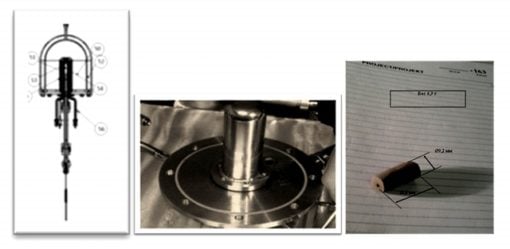
Fig. 26. On the left – reactor diagram on the right, in the center – a general view of the reactor, on the right – a working sample.
Collected a new installation. For three years, 62 experiments have been done. The results obtained not only confirmed, but also significantly surpassed the results of previous studies on the titanium – deuterium scheme. An application for registration of a European patent was filed and filed in 2012.
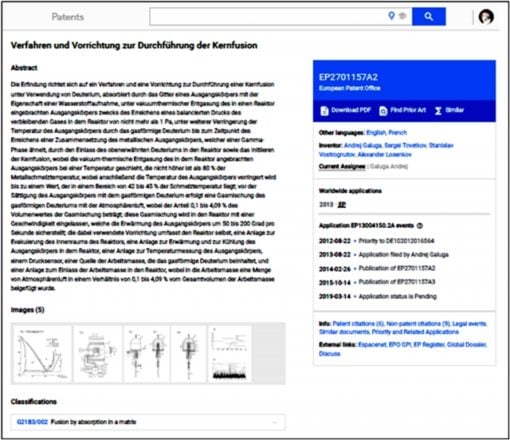
Fig. 27. Application for European patent on the method and device of cold fusion operating on deuterated titanium, from 2012.
It is under review. Twice we were offered to close it and cancel it. But we persist in writing objections. They take time to consider these objections, conduct a new examination and again send us another refusal. But since last year a breakthrough began in the world in issuing various patents on cold fusion, the United States began to officially register patents on cold fusion reactors, I hope that we will “finish off” the European Patent Office and get a patent. Because the Russian patent, which I received in 1997, ended its action in 2017. And the European patent is its continuation.
What results were obtained on this installation? The graph of temperature changes in Fig. 28 shows an abrupt change in the temperature of the sample when the temperature from 590 ° C soars above 1120 ° C when deuterium is injected.
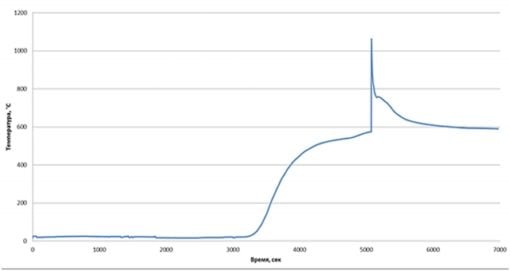
Fig. 28. Temperature change of the sample (6.9 g) with the supply of D2 + 2% air 13.11.2012.
In Fig. 29 shows the change in the pulse counting of the neutron detector. Here you can see the moment of the beginning of the nuclear process and it is clear that at this time the neutron yield is much larger than at the moment of the start of the overlap. The neutron count maximum corresponds to the moment of the second maximum in temperature in Fig. thirty.
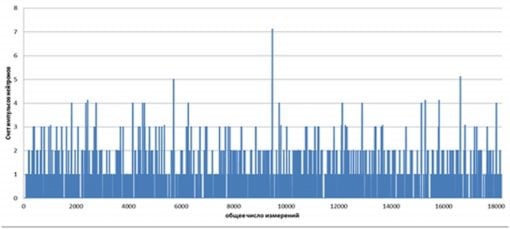
Fig. 29. The change in the counting of neutron pulses at the start-up of D2 on sample No. 211.11.2012.
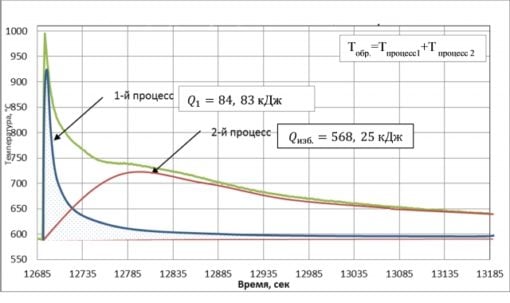
Fig. 30. Sample temperature at titanium deuterium loading 09/14/2015.
I believe that the temperature curve, which is indicated in Fig. 30 in green, is the result of two processes of heat. The first process, shown in blue, is due to the low energy of heat dissipation of the physico-chemical process of formation of titanium deuteride. The formation of titanium deteride gives us Q1 = 84.83 kJ of heat. At the moment of deuterium loading, the second process of releasing additional heat begins, which is Qizb in duration and in magnitude. = 568.25 kJ, and it significantly exceeds the process of hydride formation. It is the second process that is nuclear, that is, its heat is generated due to nuclear processes.
It is possible to determine the amount of deuterium absorbed by changing the pressure of deuterium, which turned out to be equal to 0.4263 g. And for the excess heat of 568 kJ, which is formed as a result of this process, only 5 · 10-6 g of deuterium is needed. This amount of deuterium in relation to the total amount of absorbed deuterium is 1.17 · 10-5 shares. That is, by the amount of released heat there is still a large supply of unused deuterium. This whole process takes only 40–50 minutes. The amount of energy that we spend on absorption in relation to all the heat released is obtained:
(Qizb. + Q1) / Q1 = 7.70
That is, it turns out that only one millionth of the absorbed deuterium is used to obtain the observed excess heat. There is an opportunity to increase this share.
There is one more interesting point to which attention should be paid in these studies. According to calculations, the excess heat that should have been released in these reactions should give the intensity of the neutron source:
Neutron = 3.86 × 10^5 neutron / sec.
But we register:
Ireg = 180 neutron / sec
This is 1869.5 times less than it should be according to calculations. How to explain it?
It is possible that most neutrons are simply absorbed inside the titanium sample, which gives us excess heat. Neutrons remain in the sample and structural materials of the reactor, and only some of them fly out, reach the neutron detector and register with the detector. I have at the moment such a working explanation of all this.
Further in these works secondary signs of cold nuclear fusion were discovered. I have already mentioned that 62 experiments were carried out in Nuremberg. During work we had a break for 4.5 months. At this time, a Geiger counter was left next to the installation, which measured the background inside the room where the installation was located. It turned out that the gamma background around the setup decreased, as can be seen in Fig. 31.
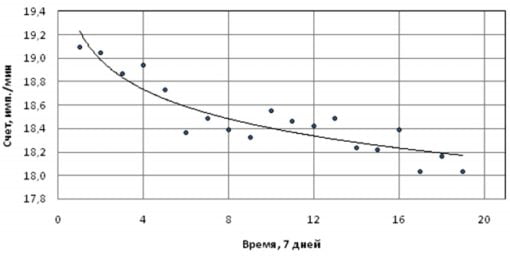
Fig. 31. Change in the pulse count of Gamma Scout from 13.11.2013 to 26.03.2014.
When we made saturation, we managed to increase the gamma background by 6−9%, and here it decreases. And it is clear that it falls off exponentially. And the exhibitor indicates that the process is related to the processes of nuclear decay. There is a scatter of points on the graph, but 6% from the top to the bottom value is nowhere to go – the background has decreased. I calculated the time of effective half-life, and it turned out:

What can disintegrate in the installation? This may be a complex of some elements – this is not one isotope.
Further, when the sample was heated, such an interesting feature was noticed as the change in the power of the external heater.

Fig. 32. Change heater power
The external heater has a certain capacity and heats the sample to 590 ° C. But when deuterium is injected, then a large energy release from the sample begins, and the power of the heater increases. How does it increase? Due to the fact that the temperature of the heater itself and its resistance increase. We used a power source that worked in the mode of maintaining a constant load current, and at the same time the temperature of this heater from an additional heat source increased. Accordingly, the resistance of the heater increases, which leads to a change in the power of the heater, according to my calculations, by 0.64 watts in 43 seconds. This is a fairly sensitive value. Therefore, I had an idea to use this effect to measure the heat from the sample during its saturation with deuterium and degassing. If you calibrate the external heater and install a constant current source, you can measure the amount of heat released from our sample without a Peltier calorimeter or a flow calorimeter.
In the same Nuremberg cycle of experiments, another very interesting mode of continuous release of excess heat was discovered, which I called self-oscillatory. In this mode, the titanium deuteride begins to absorb and release deuterium with a frequency of 0.33 Hz.
In Fig. 33 shows the preparatory steps for starting the system by turning the external heater on and off. The system swayed in this way, before it went into self-oscillatory mode. The sample was completely saturated with deuterium, and then I turned off and turned on the heater. And such a self-oscillating mode can last up to four hours.
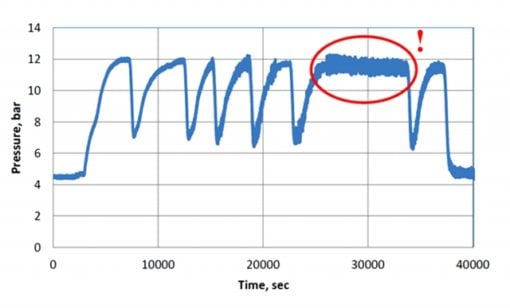
Fig. 33. The appearance of the auto-oscillation mode with a frequency of 0.33 Hz on the pressure graph is circled in red.
According to calculations, an excess heat of 360 Watts per 7 g of titanium was obtained. If you count it on a 100-gram sample, you get an excess heat source of about 7 kW. The energy intensity of such a heat source will be 52.2 W / g of titanium, which is higher than the energy release of the WWR-1000 reactor, for which it is 45.5 W / g of uranium. That is, this is a significant heat release that can be converted and used as heat or as electricity.
* * *
In the summer of 2018 in Estonia, I managed to create a new installation (Fig. 34), at which at the maximum an excess heat emission of 500 watts from a titanium sample weighing 35.7 grams was obtained. I started scaling the effect. The result was 12.26 W / g of titanium – this is 4.7 times higher than in the first experiments. It turns out that the amount of heat generated by increasing the mass of the working sample also increases. At this facility, I achieved a process in which there is a constant heat release, while the heat release increases over time. Without adding anything, without touching anything, the system itself enters the self-oscillatory mode when it starts to generate heat.
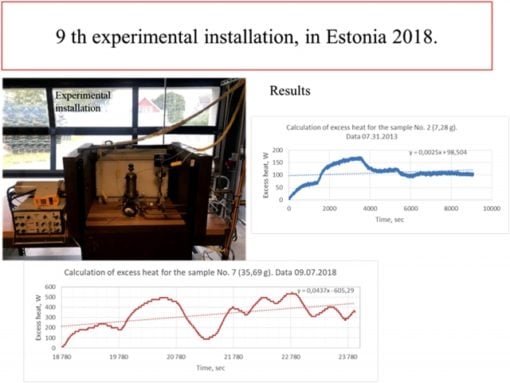
Fig. 34. Ninth experimental setup cold fusion. Estonia, 2018.
On cold nuclear fusion mechanisms
A few words about the mechanisms of cold nuclear fusion. I found the expression of Albert Einstein, made by him in 1932:
“There is no reason to assume that nuclear energy will ever be obtained. Because for this it is necessary to be able to separate the atoms.”(highlighted by me – S.T.)
Actually, a system of solids (in our case, titanium) and deuterium allows us to separate hydrogen molecules into atoms. This separation mechanism works on the surface, more precisely, the surface works here. The process of titanium saturation with deuterium is carried out in such a way that at first deuterium is adsorbed on the surface, is divided into individual atoms, and individual atoms can penetrate into the titanium lattice. The size of the crystal lattice of titanium is such that the deuterium molecule cannot pass inside. Only if we divide it into individual atoms, then the deuterium in the atomic state quietly passes inside the lattice.
Based on my long research experience, it is possible to formulate the main components of the cold nuclear fusion realization mechanism in titanium:
1. The separation of hydrogen molecules into atoms.
2. Transformation of the energy of individual atoms using heavier atoms.
3. Maxwell distribution of atoms by energy.
4. The effect of the collider.
5. Van der Waals forces.
6. Tunneling.
7. Primary products of high energy cold nuclear fusion.
8. Siverts law.
Explanations for item 7. The first products that are obtained as a result of the d + d reaction, tritium, proton, helium-3 and neutron, have very large energies, MeV! Large energies give a very large cross section for the reaction of the interaction of reaction products with each other. I believe that the resulting neutrons, helium-3, tritium and protons interact with each other with the development of the same tritium and helium-4. A cascade of nuclear reactions is launched, which leads to the production of tritium in much larger quantities than neutrons are obtained, and this is what we register. That is, neutrons, in addition to the energy return to the titanium lattice, are also involved in the formation of tritium. At the same time, helium-3 still adds protons to these reactions; therefore, such an imbalance of the amount of products in these nuclear reactions is observed. As a result of a cascade of nuclear fusion reactions, helium-4 is formed. Thus, helium-4 is not the primary product of the d + d reaction, but secondary, which is created as a result of the implementation of a cascade of nuclear reactions of high-energy products of the initial d + d reactions. That is my understanding of the process today.
* * *
Prospects for cold fusion
It is impossible to tell in detail about all aspects and directions of development that arise in the process of studying this amazing phenomenon of cold nuclear fusion. You can only identify the main directions, each of which requires a serious and lengthy discussion. At the moment I would highlight the following areas:
1. Getting heat and electricity.
2. Processing of nuclear waste from nuclear power plants and other industries.
3. Synthesis of tritium is much cheaper in cost than currently available in nuclear reactors.
4. Synthesis of precious metals and rare isotopes.
5. Getting oxygen from carbon dioxide.
6. Creating a gamma laser.
7. Space, aviation, auto and railway engines using technology.
No one wants to waste time today on understanding the mechanisms of cold fusion, although logic suggests that there was first a fusion of the elements, and now we use them using fission reactions or simply burning fossil fuels. Humanity is vital to the transition to nature-like, cyclical technologies that will meet the needs of people without disturbing the natural balance and gyres. The key technology in this transition today is the cold fusion technology of cold transmutation of nuclei. The transition to new nuclear technologies allows solving simultaneously the main energy, resource and environmental global problems.
Cold nuclear fusion is the gift of the Creator. Sin is not to take advantage of this. We must learn to use it.
By Sergey Tsvetkov
This is a re-post of a google-translated article by Sergey Tsvetkov published April 8, 2019 at REGNUM https://regnum.ru/news/2606951.html. Any use of materials is allowed only if there is a hyperlink to REGNUM news agency.

